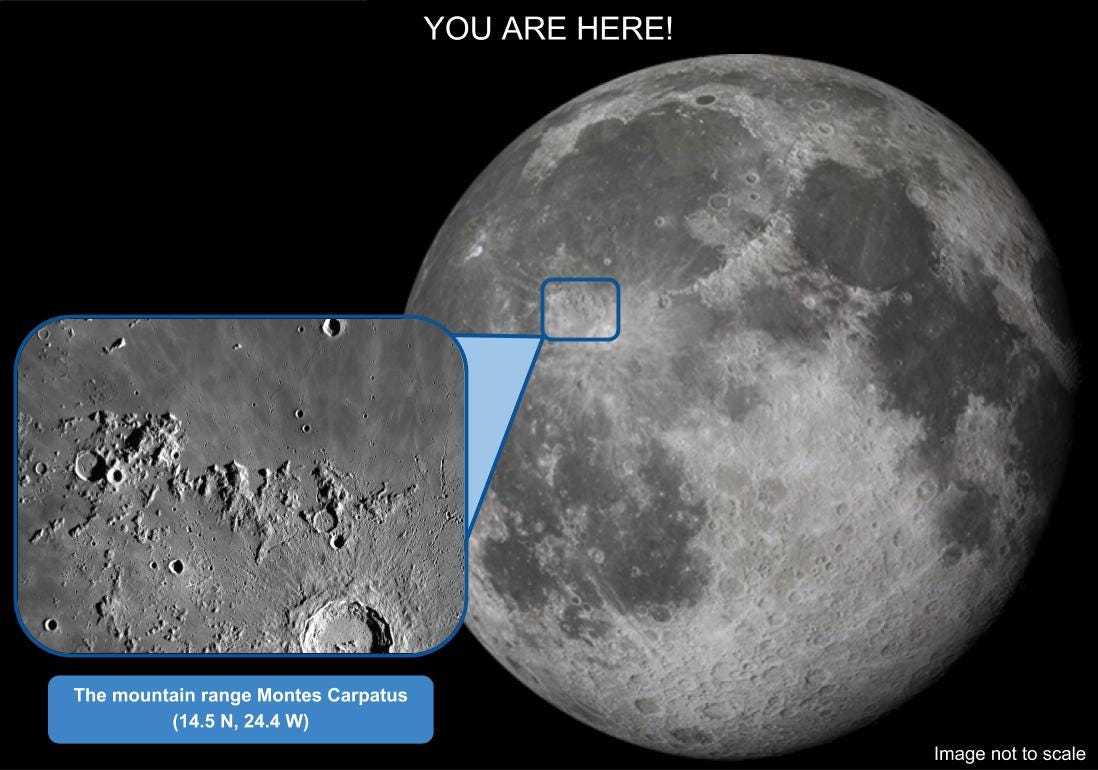A stretch of volcanic mountains on the Moon
The 361 kilometers wide arc of Montes Carpatus.
Seen here is part of the volcanic mountain range Montes Carpatus, the full range stretching 361 kilometers across the Moon.

Montes Carpatus forms the southern border of the Mare Imbrium, with the eastern border being the prominent Montes Apenninus. Montes Carpatus formed about 3.8 to 3.9 billion years ago when the basin of Mare Imbrium was excavated by a large asteroid-sized impact. The impact uplifted nearby crustal material to form the arc-shaped mountain range.

The dark, low albedo material seen littered across the landscape is proof of volcanic activity. These volcanic rocks formed when lava that originated from the melted mantle erupted about 3 billion years ago.
Volcanic landscapes like Montes Carpatus are a direct entry point into the Moon's internal structure. Such exposed internal lunar material on the surface are viable to study with future lunar landers.

